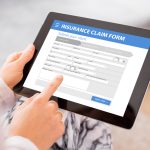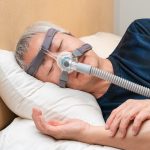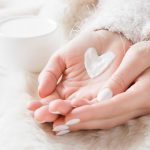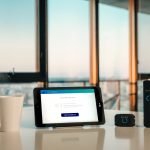How Does Condensation Affect My OSA Treatment?
Posted by Remologie Staff

Have you ever experienced excessive condensation in your tubing or mask? For people who suffer from sleep apnea, condensation in CPAP machine equipment can be frustrating and uncomfortable. Learn how this can affect your treatment.
Why does condensation happen?
Condensation is the transformation of a gas or vapor into a liquid, such as the conversion of some of the air passing through your CPAP (continuous positive airway pressure) tubing into droplets of water. Heavy accumulation of water in your CPAP mask and tubing due to too much condensation is called CPAP rainout.
Condensation can happen when your CPAP machine has a heated humidifier. These popular CPAP features are extremely helpful for people who use CPAP treatment for their sleep apnea. That’s because dry air blowing through your tube all night can cause many uncomfortable issues, like the following:
- Dry, irritated airways
- Nose bleeds
- Sore throat
- Nasal congestion
- Increased sinus dryness when you take medication with this side effect
- Discomfort from the chilly air
- Mouth breathing to counter the discomfort
But with a heated humidifier, you can overcome these issues. The water-filled humidifier on your CPAP warms and moistens the air that’s pushed through your tube into your airway.
Remember though, that your tube is quite long, usually at least six feet in length. This length accommodates your movements during sleep, allowing you to comfortably change position without dislodging the tube from the machine.
However, that’s a long way for the heated air to travel within an unheated tube before it reaches your mouth and nose. Along the way, the temperature of the air begins dropping, and it can be a rapid process. That quick cooling impact causes the air to condense into water droplets within your tube. This condensation effect causes CPAP rainout.
What are the effects of too much condensation?
Too much condensation creates water overflow in your tubing. Just like the air, the water in your tube is pushed into your mask on its way to your airways via the positive pressure from your CPAP machine.
The sensation and sound of water splashing onto your face, sloshing around in your mask, and gurling through your tubing can be very unpleasant. It may wake you, further disrupting your sleep quality, which is already disturbed due to your sleep apnea.
This experience may also heighten the sensations of suffocation that often accompany sleep apnea. This leads to anxiety, which can lessen CPAP compliance. Essentially, you start worrying that the condensation will continue to happen nightly, causing discomfort and stress. This prevents you from using your CPAP treatment regularly.
Even when you do use the machine, the rainout effect of too much condensation counters the positive effects of your therapy, lessening its helpfulness. These effects demonstrate how serious too much condensation can be for your treatment.
How do I make sure I don’t have condensation?
So, what can you do to reduce or eliminate the condensation effect? Obviously, you need the humidifier feature for its many benefits. Therefore, the solutions need to accommodate that option. But there may be other contributing causes. Tackle those problem areas to beat CPAP rainout.
Here are a few suggestions.
- Place your CPAP machine on a surface that’s lower than your mask. That way, the condensation needs to move upwards to reach your mask and your face.
- Raise your room temperature so that it doesn’t chill your tubing. Condensation happens more easily when there’s a big temperature difference between the tubing and the warmed air passing through it.
- Check with your medical provider that the humidifier settings are appropriate for the climate you’re in. Again, this addresses the temperature differences between the warmed air and the cooler tubing.
- Wrap your tubing in specially designed insulation. These tube wraps help keep your tubing warm to lessen or eliminate the condensation effect due to rapid temperature changes. You can choose from various materials and insulating properties.
Tubing wrap is a smart option that can solve your CPAP rainout problem without impacting your own comfort level. For example, you won’t have to place your machine on the floor to keep it at a lower level. No need to worry about tripping over your CPAP or pets getting to it.
You can also keep your room at the temperature that’s most comfortable for you, even if that’s a chilly setting. The important thing is to make your sleeping area as conducive to sleep as possible for your personal preferences.
With insulated tubing, you may also enjoy the benefits of your humidifier without changing the setting to a higher temperature that may be less effective. Tubing wraps are an efficient solution to CPAP condensation rainout that overcome the disadvantages of other methods.
Talk to our experienced sleep therapists if you have any other questions about sleep apnea condensation in CPAP machine equipment or tubing wraps.












